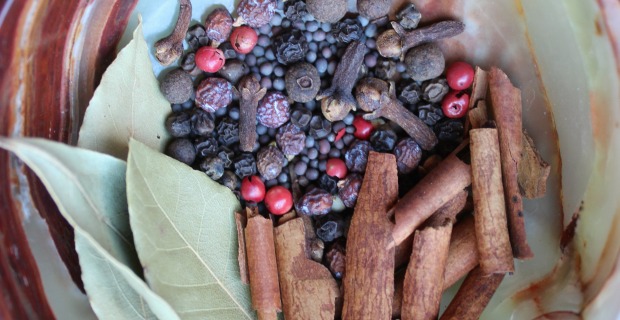Did you know that in order to make your own Corned Beef and Cabbage you need to make your own Corned Beef Brine well ahead of St. Patrick’s Day?
Yeah…that’s a thing!
See, a couple of years ago I had no idea how long it might take to DIY us some Corned Beef and Cabbage for St. Patrick’s Day so I got this wild hair to make it on St. Patrick’s Day.
Right.
Because surely it was going to be that easy.
I learned then that your beef must brine for 7 to 10 days in a special, multiple ingredient corned beef brine to give it it’s corned beefiness.
So, we purchased some pre-made stuff from the hot bar of our local co-op instead and I (feeling quite foolish) enjoyed it just the same. I also vowed to fully DIY it the next year.
Well, fast forward a year and imagine me forgetting all about my wild hair until it was, again, too late to brine the beef.
So, we purchased some pre-brined beef and threw it in a pot with some onions, carrots and potatoes.
It was delicious, but it still did not appease that damn wild hair that kept tickling the DIY Warrior inside me!
And so, determined to finally make our corned beef from scratch I looked up a bunch of different recipes, made an ingredients list, and marked the Corned Beef Brine date on the calendar.
Literally.
Fast forward almost another year and it was time to gather my ingredients!
Unfortunately, in my neck of the woods, there are no pre-made spice packets to be found (they don’t sell well so the stores don’t carry them).
Luckily, all of the spices can, however, be found in bulk at the local natural grocery store!
Now, this means many little baggies of 12 of this and eight of that and a slight pour of this other thing, which is time-consuming and a little wasteful in the baggie department, but doable and totally worth the effort (and the baggies can be reused into infinity if you’re into such thing).
And so here’s your shopping list:
Corned Beef Brine Recipe
- ~3 lbs beef brisket
- 2 quarts water
- 1 cup Kosher Salt
- ½ cup packed Brown Sugar
- 12 whole Juniper Berries
- 8 whole Cloves
- 8 whole Allspice Berries
- 3 Bay Leaves
- 1 Cinnamon Stick (broken up)
- 1 teaspoon Peppercorns
- 1 teaspoon Mustard Seeds
On St. Paddy’s Day I follow this recipe to turn it all into a delicious meal!
And if you’re curious about why saltpeter (that which turns your corned beef the pink color we’re used to seeing) isn’t necessary and why it’s important to know what’s going into your food, you can read all about that here.
Now, with just one more shopping trip to plan to pick up all your veggies, you’re all set, fully capable of brining your very own corned beef, and in much better shape now than I was all those years ago 😉
Happy Brining!
xoxo,
M
PS -If you’re wondering how it turned out, it was fabulous! Read about it and some of my history here.


Pingback: My Week on Wednesday, Irish Recipes, and Other Things That are Green » Once Upon a Time in a Bed of Wildflowers
Pingback: Corned Beef and Cabbage - Ever Growing Farm | Ever Growing Farm
I was a Chemist for 20+ years and an all to aware of sodium nitrate which is the chemical name for Saltpeter (or saltpetre). Also known as potash nitrate. It is used as a food preservative for cured meats (bacon, ham,corned beef)in sensitive teeth formula toothpaste, in fireworks and in fertilizer. When used in food curing applications it is found to inhibit growth of Clostridium. Recent evidence indicates that they may also inhibit E. coli, Salmonella, and Campylobacter.
Nitrates can cause upset stomach, headaches and even kidney damage (in high doses).
Tonya@mycozylittlefarmhouse recently posted…Crockpot Smothered Cube Steaks
Tonya, Thank you for explaining that much better than I could 🙂